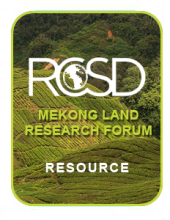Land Library
Welcome to the Land Portal Library. Explore our vast collection of open-access resources (over 74,000) including reports, journal articles, research papers, peer-reviewed publications, legal documents, videos and much more.
/ library resources
Showing items 1 through 9 of 60.Agricultural growth will prove essential for improving the welfare of the vast majority of Africa’s poor. Roughly 80 percent of the continent’s poor live in rural areas, and even those who do not will depend heavily on increasing agricultural productivity to lift them out of poverty.
This national Policy for the water sector in Cambodia sets out a vision, fundamental principles, current situation and policies regarding development and management of freshwater resources and water demand and supply in Cambodia.
Land policies are of fundamental importance to sustainable growth, good governance, and the well-being of, and the economic opportunities open to, both rural and urban dwellers - particularly the poor.
Iron deficiency anemia (IDA) affects more than 3.5 people in the developing world. More than half of pregnant women (56 percent) and 44 percent of nonpregnant women are anemic (ACC/SCN 2000).
This study examines the implications of gender differences in wealth transfers—farmland and education—on the lifetime incomes of men and women in the rural areas of Ghana, the Philippines, and Sumatra.
Before 1994 the policy of apartheid in South Africa had systematically denied the majority of the population access to resources through legal restrictions on mobility, property rights, and residential location (Thompson 1990).
The supplies of fish in the world’s vast oceans once seemed inexhaustible. Not any more. In the past three decades, production and consumption
The devolution of natural resource management responsibility from the state to communities or local user groups has become a widespread trend that cuts across countries and resource sectors.









